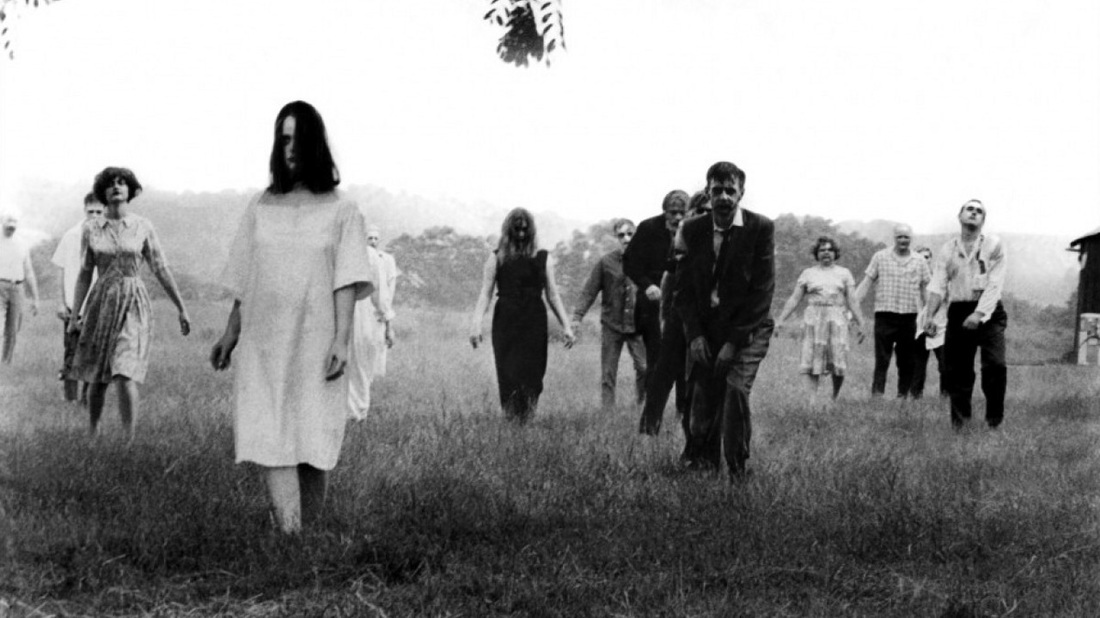At the point of their inception, zombie films were largely created because of a popular contemporary fascination with Haiti and voodoo, which meant that zombies were often animated by some sort of spell and used as servants to whatever “master” controlled them (Harris). This early approach to zombie films was quite prevalent in White Zombie (Halperin, 1932), which is generally considered to be the first movie to feature zombies by name. However, in terms of the film’s socio-political impact, with the stock market crashing and people falling into debt around the release of White Zombie, the notion of zombies really resonated with the fears of Americans at that time, as viewers considered zombies to be symbolic of the powerlessness of the American workforce.
This general style of zombie films being heavily rooted in voodoo continued throughout the 1930s and 1940s, but by the 1950s, filmmakers began to play around with some of the established zombie film conventions (Harris). For instance, in Plan 9 From Outer Space (Wood, 1959) and Invisible Invaders (Cahn, 1959), zombies were not controlled via voodoo, but rather raised from the dead by aliens. Likewise, in The Last Man on Earth (Ragona and Salkow, 1964), a virus was responsible for creating zombie-like vampires. Overall, these films were instrumental in making zombies more dangerous, killing machines, which was a trend greatly advanced by George Romero, the father of the modern zombie film.
With the groundbreaking release of Romero’s Night of the Living Dead in 1968, the zombie film genre underwent an enormous revolution. Building off of conventions established by various films of the 1950s, Romero’s zombies were hostile, flesh-eating monsters that could swell their numbers to pandemic proportions (Brooks). In addition, similar to certain films from the 1950s, the monster’s origins could be attributed to science rather than to magic. Likewise, under the new portrayal of the zombie, the monster could only be dispatched via a scientific solution: to destroy the brain or sever it from the rest of the body. Perhaps most important of all though, Romero’s zombies were entirely driven by their insatiable hunger for human flesh, causing them to attack the living. If bitten by a zombie, the living would eventually become zombies themselves, making the monsters a frightening new form of walking plague that could rapidly collapse modern society and eradicate humanity.
Despite creating a successful formula for portraying the modern day zombie, for many years after the release of Romero’s film, the zombie film genre’s appeal was largely contained to a small cult following and did not have much success meshing with pop culture. This all changed with the release of Danny Boyle’s 2002 hit, 28 Days Later, which earned enormous critical support while proving to the film industry that there was money to be made from the zombie film genre (Barber). Over the next several years, movies like Dawn of the Dead (Snyder, 2004), Shaun of the Dead (Wright, 2004), 28 Weeks Later (Fresnadillo, 2007), Zombieland (Fleischer, 2009), and most recently World War Z (Forster, 2013), have confirmed the zombie film genre’s established significance to pop culture and suggest that the genre will continue to thrive for the foreseeable future.
With that said, what is it about zombies that has made them so popular in society today? Ultimately, I believe that this popularity can be attributed to the fact that people have a lot of anxiety about the future and are afraid that the system is breaking down, making apocalyptic scenarios plausible in their minds. This reasoning is supported by Max Brooks, the author of World War Z, who explained that the zombie story really succeeds because it enables people to enter a “’safe place’ to explore their apocalyptic worries,” since these stories “give people the opportunity to witness the end of the world they’ve been secretly wondering about while, at the same time, allowing themselves to sleep at night because the catalyst of that end is fictional” (Barber).
Works Cited
Barber, Nicholas. "Why are Zombies Still so Popular?" BBC. 25 Oct 2013. <http://www.bbc.com/culture/story/20131025-zombie-nation>.
Brooks, Max. "The Movies that Rose from the Grave." The Guardian. 9 Nov 2006. <http://www.theguardian.com/film/2006/nov/10/1>.
Harris, Mark. "Zombie Movies 101." About.com. 25 Oct 2013. <http://horror.about.com/od/horrormoviesubgenres/a/zombies.htm>.


 RSS Feed
RSS Feed
